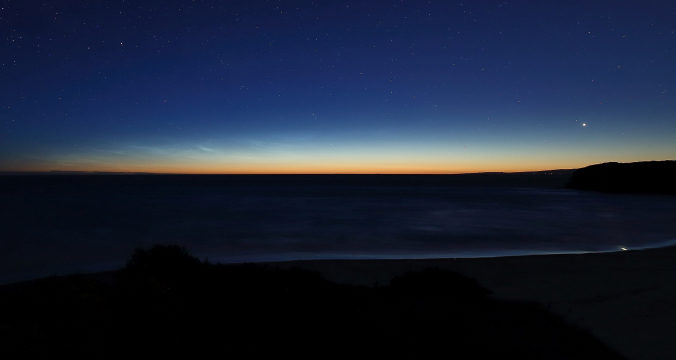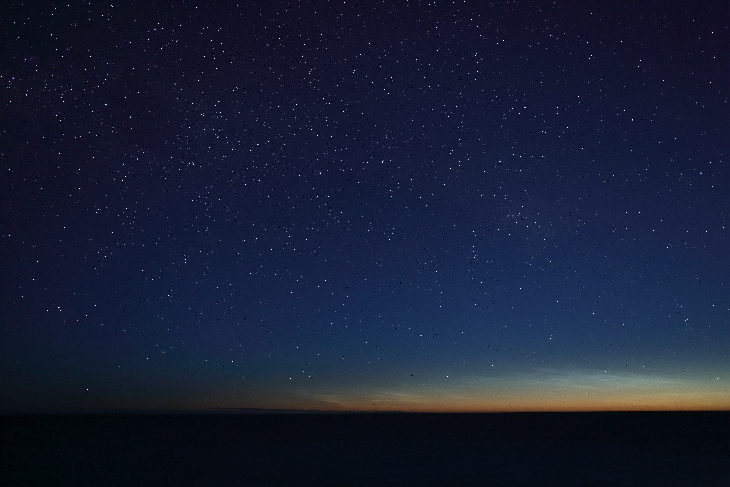
"This is a clear sign of planetary wave activity," says AIM principal investigator James Russell of Hampton University, which manages the Aeronomy of Ice in the Mesosphere mission for NASA.
Planetary waves are enormous ripples of temperature and pressure that form in Earth's atmosphere in response to Coriolis forces. In this case, a 5-day planetary wave is boosting noctilucent clouds over Antarctica and causing them to spin outward to latitudes where NLCs are rarely seen.
On Dec. 1st, Mirko Harnisch saw the clouds from Dunedin, New Zealand. "I was enjoying the late-evening sky over the Southern Ocean just after 11 pm local time when these wispy blue-ish clouds appeared," says Harnisch. "They looked like noctilucent clouds, which would make this a rare sighting for my latitude of 45S."
Indeed, very rare. Spaceweather.com has been receiving images of NLCs for more than 20 years. This is the first-ever submission from New Zealand.
Noctilucent clouds over Antarctica itself are nothing unusual. They form every year around this time when the first wisps of summertime water vapor rise to the top of Earth's atmosphere. Molecules of H2O adhere to specks of meteor smoke, forming ice crystals 83 km above Earth's surface.
But these NLCs are different. They're unusually strong and congregated in a coherent spinning mass.
"The planetary wave is responsible," says AIM science team member Lynn Harvey of the University of Colorado's Laboratory for Atmospheric and Space Physics (LASP). "It is concentrating a mass of cold water vapor in the mesosphere and causing it to pinwheel counterclockwise around the South Pole."
Harvey has been tracking the moisture in data from NASA's Microwave Limb Sounder instruments, shown above. It matches almost perfectly the location of the NLCs.
Because the noctilucent clouds are spinning around with a 5 day period, they could return to New Zealand 5 days after Harnisch saw them-that is, on Dec. 6th. Such a forecast is very uncertain. Nevertheless, sky watchers who wish to try should look west 30 to 60 minutes after sunset. If you see luminous blue-white tendrils hugging the horizon, you may have spotted a noctilucent cloud.





Comment: Could this drift to lower latitudes have something to do with the "grand" solar minimum? Could it be related to the increasingly meandering jet stream? And perhaps also pronounced due to the increased loading of the atmosphere with meteor particulates? See:
- Gulf Stream is 15% weaker, region south of Greenland coldest in 1,000 years
- Scientists say a fluctuating jet stream may be causing extreme weather events
- Professor Valentina Zharkova explains and confirms why a "Super" Grand Solar Minimum is upon us
- Michigan Meteor Event: Fireball Numbers Increased Again in 2017
Also check out SOTT radio's: